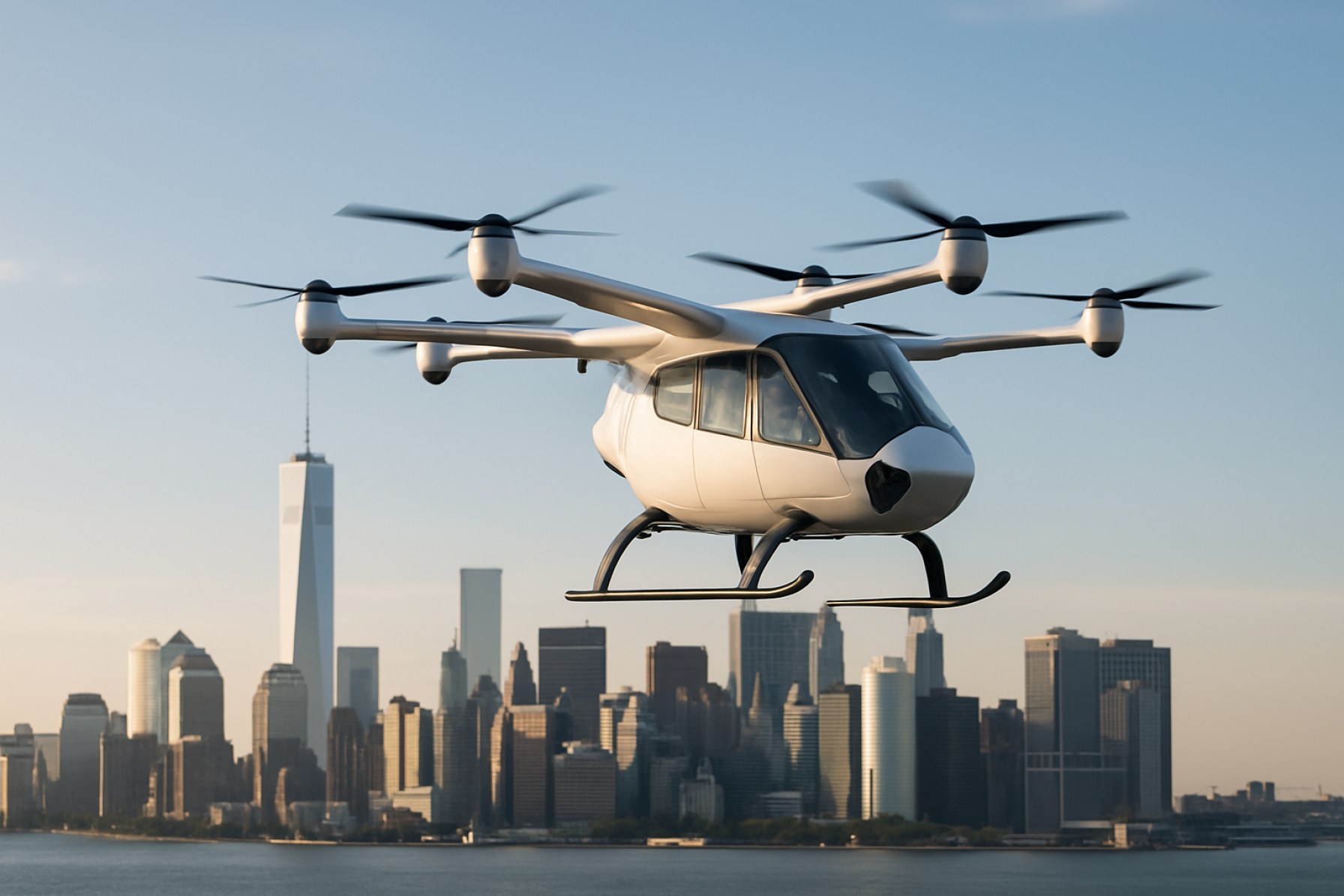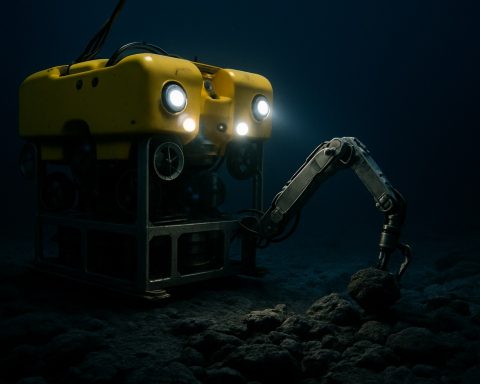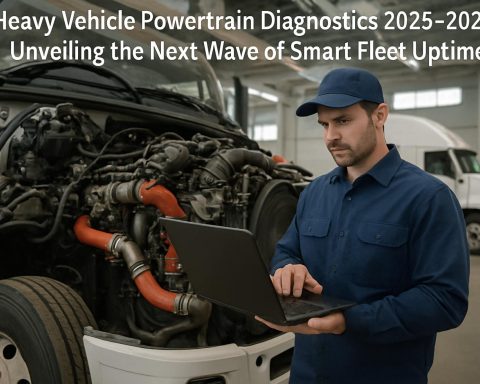Urban Air Mobility Takes Flight: How FAA-Compliant Systems Will Transform City Skies in 2025 and Beyond. Explore the Market Forces, Technologies, and Regulatory Milestones Shaping the Next Era of Urban Aviation.
- Executive Summary: Urban Air Mobility in 2025
- FAA Regulatory Landscape: Recent Changes and 2025 Outlook
- Key Players and Strategic Partnerships (e.g., Joby Aviation, Archer, Wisk – jobyaviation.com, archer.com, wisk.aero)
- Market Size, Growth Projections, and CAGR (2025–2030)
- Core Technologies: eVTOL, Autonomy, and Battery Innovation
- Infrastructure Readiness: Vertiports, Air Traffic Management, and Integration
- Safety, Certification, and Compliance Pathways (faa.gov)
- Business Models: Passenger, Cargo, and Emergency Services
- Investment Trends and Funding Landscape
- Future Outlook: Challenges, Opportunities, and the Road to Scalable Urban Air Mobility
- Sources & References
Executive Summary: Urban Air Mobility in 2025
Urban Air Mobility (UAM) is poised for significant transformation in 2025, driven by advancements in electric vertical takeoff and landing (eVTOL) aircraft and the evolving regulatory landscape. The Federal Aviation Administration (FAA) plays a central role in shaping the deployment of UAM systems, with compliance to its safety and airworthiness standards being a prerequisite for commercial operations in the United States. As of 2025, several leading aerospace manufacturers and technology companies are actively pursuing FAA certification for their eVTOL vehicles, marking a pivotal step toward the realization of urban air transport networks.
Key industry players such as Boeing, through its subsidiary Wisk Aero, and Joby Aviation are at the forefront of this movement. Joby Aviation has made substantial progress, having received a Part 135 Air Carrier Certificate from the FAA, which allows it to begin commercial on-demand air taxi operations once its aircraft achieve full type certification. Similarly, Archer Aviation is advancing its Midnight eVTOL aircraft through the FAA’s rigorous type certification process, with plans to launch commercial services in partnership with major airlines.
The FAA’s “Innovate28” initiative, announced in 2023, outlines a framework for integrating UAM operations into the national airspace by 2028, with incremental milestones set for 2025 and beyond. This includes the development of new air traffic management protocols, vertiport infrastructure standards, and pilot training requirements. The agency’s Special Federal Aviation Regulation (SFAR) for powered-lift aircraft, expected to be finalized in 2025, will provide the regulatory clarity needed for initial commercial deployments.
In parallel, infrastructure development is accelerating. Companies like Skyports are collaborating with city authorities and airport operators to design and construct vertiports that meet FAA guidelines for safety, accessibility, and integration with existing transportation networks. These efforts are supported by partnerships with major airlines, such as United Airlines and Delta Air Lines, which are investing in UAM as part of their broader sustainability and mobility strategies.
Looking ahead, the outlook for FAA-compliant UAM systems in the next few years is optimistic but contingent on continued regulatory progress and successful certification of eVTOL aircraft. The first limited commercial services are anticipated to launch in select U.S. cities by late 2025 or early 2026, with scalability dependent on the maturation of supporting infrastructure and operational frameworks. The collaborative efforts between manufacturers, airlines, infrastructure developers, and the FAA are setting the stage for a new era of urban mobility, with safety and compliance at its core.
FAA Regulatory Landscape: Recent Changes and 2025 Outlook
The regulatory landscape for Urban Air Mobility (UAM) in the United States is undergoing rapid transformation as the Federal Aviation Administration (FAA) adapts to the emergence of electric vertical takeoff and landing (eVTOL) aircraft and other advanced air mobility (AAM) solutions. In 2024, the FAA finalized its long-anticipated Special Federal Aviation Regulation (SFAR) for powered-lift aircraft, establishing interim operational and pilot certification requirements for eVTOLs. This SFAR, effective through 2028, is a pivotal step toward integrating UAM vehicles into the National Airspace System (NAS) while maintaining safety standards comparable to traditional aviation.
Key elements of the SFAR include requirements for pilot qualifications, operational limitations, and maintenance protocols tailored to the unique characteristics of eVTOLs. The regulation also outlines pathways for type certification under the FAA’s Part 21 framework, with a focus on performance-based standards. This approach allows manufacturers to demonstrate compliance through innovative means, reflecting the novel architectures of UAM vehicles. Notably, the FAA is working closely with industry leaders such as Archer Aviation, Joby Aviation, and Wisk Aero, all of whom are progressing through various stages of type certification for their eVTOL aircraft.
In 2025, the FAA is expected to further refine its regulatory framework, with a focus on permanent rules for powered-lift operations and the integration of UAM into urban environments. The agency is also advancing its UAM Concept of Operations (ConOps), which addresses airspace integration, vertiport infrastructure, and community engagement. The FAA’s partnership with NASA through the Advanced Air Mobility National Campaign is accelerating the development of operational concepts and data-sharing protocols, supporting safe and scalable UAM deployment.
Looking ahead, the outlook for FAA-compliant UAM systems is increasingly optimistic. Several manufacturers anticipate receiving type certification by 2025 or shortly thereafter, paving the way for limited commercial operations in select U.S. cities. For example, Joby Aviation has announced plans to launch passenger services in partnership with major mobility providers, contingent on regulatory approvals. Similarly, Archer Aviation is targeting initial operations in urban corridors, leveraging its collaboration with United Airlines and local authorities.
As the FAA continues to evolve its regulatory approach, the next few years will be critical for establishing the safety, reliability, and public acceptance of UAM systems. Ongoing engagement between regulators, manufacturers, and stakeholders will shape the trajectory of urban air mobility, with the United States poised to lead in the global adoption of FAA-compliant UAM solutions.
Key Players and Strategic Partnerships (e.g., Joby Aviation, Archer, Wisk – jobyaviation.com, archer.com, wisk.aero)
The landscape of FAA-compliant Urban Air Mobility (UAM) systems in 2025 is shaped by a cohort of pioneering companies, each advancing electric vertical takeoff and landing (eVTOL) aircraft toward commercial deployment. These key players are not only developing aircraft that meet stringent Federal Aviation Administration (FAA) certification requirements but are also forging strategic partnerships to accelerate integration into urban airspace and infrastructure.
Joby Aviation stands at the forefront, having made significant progress toward FAA type certification for its piloted, all-electric eVTOL aircraft. The company’s aircraft is designed for four passengers plus a pilot, with a range of up to 100 miles and speeds of 200 mph. In 2024, Joby became the first eVTOL developer to complete the third of five stages in the FAA’s type certification process, a critical milestone for commercial operations. Joby’s strategic alliances include a partnership with Delta Air Lines to integrate UAM services into airport transfers, and collaboration with the U.S. Department of Defense for operational testing. The company is also working with infrastructure partners to develop vertiports and charging solutions (Joby Aviation).
Archer Aviation is another major contender, focusing on its Midnight eVTOL aircraft, which is designed for rapid, back-to-back short flights in urban environments. Archer has secured a landmark agreement with United Airlines for up to 200 aircraft, aiming to launch commercial operations as early as 2025. The company is advancing through the FAA’s certification process and has established a manufacturing partnership with Stellantis to scale production. Archer’s collaboration with United includes plans for UAM routes connecting city centers to major airports, with initial operations targeted for cities like New York and Chicago (Archer Aviation).
Wisk Aero, a joint venture between Boeing and Kitty Hawk, is developing a fully autonomous, four-seat eVTOL aircraft. Wisk’s approach centers on autonomy and safety, with the company working closely with the FAA to establish certification pathways for autonomous passenger flight. In 2023, Wisk announced a partnership with the city of Long Beach, California, to explore UAM integration and vertiport development. Boeing’s backing provides Wisk with significant aerospace expertise and resources, positioning it as a leader in autonomous UAM (Wisk Aero).
Other notable players include Lilium, developing a seven-seat jet-powered eVTOL, and Volocopter, which is targeting FAA validation for its VoloCity air taxi. Both companies are actively pursuing FAA certification and have established partnerships with infrastructure and mobility providers to support UAM ecosystem development.
Looking ahead, the next few years will see these companies racing to achieve full FAA certification, scale manufacturing, and launch initial commercial services. Strategic partnerships with airlines, automotive manufacturers, and city authorities are expected to play a pivotal role in overcoming regulatory, operational, and infrastructure challenges, setting the stage for the first FAA-compliant UAM networks in major U.S. cities.
Market Size, Growth Projections, and CAGR (2025–2030)
The market for FAA-compliant Urban Air Mobility (UAM) systems is poised for significant growth between 2025 and 2030, driven by regulatory advancements, technological maturation, and increasing investment from both established aerospace companies and innovative startups. As of 2025, the UAM sector is transitioning from prototype and demonstration phases to early-stage commercial operations, particularly in the United States, where the Federal Aviation Administration (FAA) is actively shaping the regulatory landscape for electric vertical takeoff and landing (eVTOL) aircraft and supporting infrastructure.
Key industry players such as Boeing, through its subsidiary Wisk Aero, and Airbus with its CityAirbus NextGen, are advancing FAA-compliant vehicle designs and collaborating with regulators to ensure airworthiness certification. Joby Aviation and Archer Aviation are among the first U.S.-based companies to receive FAA Special Airworthiness Certificates for their eVTOL prototypes, with both targeting commercial launch readiness by 2025–2026. Lilium and Eve Air Mobility are also progressing through FAA certification pathways, aiming for U.S. market entry within this timeframe.
The UAM market’s size in 2025 is estimated to be in the low single-digit billions (USD), reflecting limited but growing commercial operations, pilot programs, and infrastructure investments. Growth projections for the sector are robust, with a compound annual growth rate (CAGR) frequently cited in the 25–35% range through 2030, as more aircraft achieve FAA certification and urban air taxi services expand to additional metropolitan areas. This growth is underpinned by increasing partnerships between UAM manufacturers and infrastructure providers, such as Skyports and Urban-Air Port, who are developing vertiport networks in anticipation of regulatory approvals.
The outlook for 2025–2030 is shaped by several factors: the pace of FAA certification for both aircraft and operational concepts, the scaling of manufacturing capabilities by companies like Textron (parent of Bell), and the integration of UAM into existing airspace management systems. The FAA’s ongoing work on operational frameworks, such as the UAM Concept of Operations (ConOps) and the Advanced Air Mobility (AAM) Integration Office, is expected to accelerate market readiness and adoption. As a result, the U.S. is likely to remain a global leader in FAA-compliant UAM deployment, with other regions referencing FAA standards for their own regulatory models.
Core Technologies: eVTOL, Autonomy, and Battery Innovation
The rapid evolution of urban air mobility (UAM) is fundamentally driven by three core technologies: electric vertical takeoff and landing (eVTOL) aircraft, advanced autonomy systems, and next-generation battery innovation. As the U.S. Federal Aviation Administration (FAA) refines its regulatory framework for UAM, these technologies are being developed and tested with a focus on compliance, safety, and scalability for commercial operations expected to begin as early as 2025.
eVTOL aircraft are at the heart of UAM, offering quiet, efficient, and emission-free flight suitable for dense urban environments. Leading manufacturers such as Joby Aviation, Archer Aviation, and Eve Air Mobility are progressing through the FAA’s type certification process, a critical step for commercial deployment. In 2024, Joby Aviation became the first eVTOL company to receive a Part 135 Air Carrier Certificate from the FAA, allowing it to begin on-demand commercial air taxi operations with conventional aircraft as it prepares its eVTOL for service. Archer Aviation and Eve Air Mobility are also targeting 2025 for initial commercial launches, with their aircraft undergoing rigorous FAA testing and validation.
Autonomy is another pillar of FAA-compliant UAM systems. While initial operations will require human pilots, the industry is rapidly advancing toward higher levels of automation to enhance safety, reduce pilot workload, and enable scalable operations. Companies like Wisk Aero are developing fully autonomous, all-electric air taxis, working closely with the FAA to establish certification pathways for autonomous flight. The FAA’s ongoing collaboration with industry stakeholders is shaping operational standards and airspace integration protocols, with a focus on detect-and-avoid systems, secure communications, and robust flight management software.
Battery innovation remains a critical enabler for eVTOL viability. The energy density, charging speed, and lifecycle of batteries directly impact aircraft range, turnaround time, and operational economics. Manufacturers are partnering with battery technology leaders to develop aviation-grade lithium-ion and emerging solid-state batteries. For example, Lilium is working on proprietary battery modules designed for high power output and rapid charging, aiming to meet both FAA safety requirements and the demanding operational profiles of urban air mobility.
Looking ahead to 2025 and beyond, the convergence of FAA-compliant eVTOL design, progressive autonomy, and advanced battery systems is expected to unlock the first wave of commercial UAM services in select U.S. cities. Continued regulatory alignment, technology maturation, and infrastructure development will be essential to scale these systems safely and efficiently in the coming years.
Infrastructure Readiness: Vertiports, Air Traffic Management, and Integration
The readiness of infrastructure is a critical determinant for the successful deployment of FAA-compliant Urban Air Mobility (UAM) systems in the United States. As of 2025, the focus is on three main pillars: vertiport development, advanced air traffic management, and seamless integration with existing urban and aviation infrastructure.
Vertiports—dedicated takeoff and landing facilities for electric vertical takeoff and landing (eVTOL) aircraft—are at the forefront of infrastructure planning. Companies such as Skyports and Urban-Air Port are actively designing and piloting modular vertiport concepts in partnership with city authorities and airport operators. In the U.S., Joby Aviation and Archer Aviation have announced collaborations with major airports and urban planners to identify optimal vertiport locations, focusing on connectivity, safety, and passenger throughput. The Federal Aviation Administration (FAA) has published initial vertiport design standards, providing guidance on layout, safety zones, and integration with ground transportation, which is expected to accelerate permitting and construction in 2025 and beyond.
Air traffic management (ATM) for UAM is evolving rapidly to address the unique challenges posed by high-frequency, low-altitude operations in dense urban environments. The FAA’s NextGen program is working to adapt existing airspace management systems for UAM, emphasizing digital communication, real-time tracking, and automated deconfliction. Industry leaders such as NASA and Thales Group are collaborating on Unmanned Aircraft System Traffic Management (UTM) frameworks, which will be essential for integrating eVTOLs with conventional aircraft and drones. Demonstration projects in 2024 and 2025 are validating these systems in live urban settings, with a focus on scalability and cybersecurity.
Integration with existing infrastructure remains a complex challenge. UAM systems must interface with city transit networks, airport operations, and emergency services. Companies like Lilium and Volocopter are working with municipal governments to ensure that vertiports are accessible, multimodal, and compliant with local zoning and environmental regulations. The FAA is also coordinating with state and local agencies to streamline certification and operational approval processes, aiming for initial commercial UAM services in select cities by the late 2020s.
Looking ahead, the outlook for FAA-compliant UAM infrastructure is cautiously optimistic. While technical standards and pilot projects are advancing, large-scale deployment will depend on continued regulatory clarity, public acceptance, and investment in both physical and digital infrastructure. The next few years will be pivotal as the first operational vertiports and UAM corridors come online, setting the stage for broader adoption across the United States.
Safety, Certification, and Compliance Pathways (faa.gov)
The pathway to FAA-compliant Urban Air Mobility (UAM) systems is defined by rigorous safety, certification, and operational standards, with 2025 marking a pivotal year for regulatory milestones and industry readiness. The Federal Aviation Administration (FAA) has established a comprehensive framework for certifying electric vertical takeoff and landing (eVTOL) aircraft, airworthiness, pilot training, and operational integration into the National Airspace System (NAS). The agency’s Federal Aviation Administration “Innovate28” initiative targets 2028 for scaled UAM operations, but 2025 is critical for type certification and initial commercial deployments.
Key industry players are advancing through the FAA’s Part 21 (aircraft certification) and Part 135 (air carrier operations) processes. Joby Aviation is among the first to achieve FAA Special Airworthiness Certification for its prototype eVTOL, and is progressing through the five-stage type certification process, aiming for commercial launch as early as 2025. Archer Aviation has also received FAA Special Airworthiness Certificates for its “Midnight” aircraft and is targeting type certification in 2025, with plans for initial operations in partnership with major airlines and urban stakeholders.
The FAA’s approach to UAM certification emphasizes a “powered-lift” category, requiring manufacturers to demonstrate compliance with both fixed-wing and rotorcraft safety standards. This includes robust testing for flight control systems, redundancy, crashworthiness, and noise abatement. The agency is also developing new pilot certification standards tailored to eVTOL operations, with a focus on training for unique flight characteristics and urban environments.
Operational compliance is another critical area. The FAA is working with industry and local authorities to develop vertiport design standards, airspace integration protocols, and digital traffic management systems. Wisk Aero, a subsidiary of Boeing, is collaborating with the FAA on autonomous flight certification, aiming to bring self-flying UAM vehicles to market later in the decade. Meanwhile, Eve Air Mobility (an Embraer company) is participating in FAA-led trials for UAM airspace integration and vertiport operations.
Looking ahead, 2025 is expected to see the first FAA-certified eVTOLs enter limited commercial service, primarily in pilot projects and controlled urban corridors. The pace of certification and operational approvals will set the tone for broader UAM adoption, with safety and compliance remaining the top priorities for both regulators and manufacturers. The collaborative efforts between the FAA and industry leaders are shaping a pathway that balances innovation with the highest standards of public safety and airspace integrity.
Business Models: Passenger, Cargo, and Emergency Services
The business models emerging around FAA-compliant Urban Air Mobility (UAM) systems in 2025 are rapidly diversifying, with a focus on three primary segments: passenger transport, cargo logistics, and emergency services. Each segment is shaped by regulatory milestones, technological readiness, and evolving partnerships between manufacturers, operators, and infrastructure providers.
In the passenger segment, several companies are preparing for commercial launch pending final FAA certification. Joby Aviation is a leading example, having achieved key FAA Part 135 Air Carrier Certification and progressing through the type certification process for its electric vertical takeoff and landing (eVTOL) aircraft. Joby’s business model centers on operating its own aerial ridesharing service, with plans to integrate with existing ground-based mobility platforms. Similarly, Archer Aviation is targeting urban airport-to-city center routes, leveraging partnerships with major airlines to feed passenger demand. Both companies are developing direct-to-consumer services, with a focus on high-frequency, short-haul urban routes.
Cargo and logistics represent another promising avenue, with companies like Boeing (through its subsidiary Wisk Aero) and Eve Air Mobility exploring autonomous and piloted UAM vehicles for package delivery and time-sensitive freight. These models often involve partnerships with logistics giants and airport operators, aiming to streamline last-mile delivery and reduce urban congestion. The FAA’s ongoing work on operational standards for unmanned and remotely piloted aircraft is expected to accelerate the deployment of cargo UAM services in the next few years.
Emergency services are also a focal point for UAM deployment, with companies like Volocopter and BETA Technologies collaborating with municipal agencies to develop air ambulance and rapid response solutions. These services leverage the unique capabilities of eVTOL aircraft—such as vertical takeoff and landing in confined urban spaces—to provide faster response times for medical emergencies and disaster relief. The FAA’s integration of UAM into the National Airspace System includes provisions for priority operations, which is expected to facilitate the adoption of UAM in critical public safety roles.
Looking ahead, the outlook for FAA-compliant UAM business models is shaped by regulatory progress, infrastructure development, and public acceptance. The FAA’s continued work on certification pathways and operational frameworks is expected to enable initial commercial operations in select U.S. cities by 2025–2026, with scaling dependent on airspace integration and community engagement. As these systems mature, hybrid business models—combining passenger, cargo, and emergency services—are likely to emerge, maximizing asset utilization and accelerating the path to profitability.
Investment Trends and Funding Landscape
The investment landscape for FAA-compliant Urban Air Mobility (UAM) systems in 2025 is characterized by robust capital inflows, strategic partnerships, and a focus on regulatory milestones. As the Federal Aviation Administration (FAA) advances its frameworks for certifying electric vertical takeoff and landing (eVTOL) aircraft and related infrastructure, investors are increasingly targeting companies with clear pathways to regulatory compliance and commercial deployment.
Leading UAM developers such as Joby Aviation, Archer Aviation, and Eve Air Mobility have attracted significant funding rounds in the past two years, with capital often earmarked for FAA certification, manufacturing scale-up, and early service launch. For example, Joby Aviation has secured investments from major players including Toyota and Delta Air Lines, and remains one of the first UAM companies to receive a Part 135 Air Carrier Certificate from the FAA, a key step toward commercial operations. Similarly, Archer Aviation has formed strategic alliances with United Airlines and Stellantis, leveraging both financial and industrial support to accelerate its FAA certification process.
The funding environment in 2025 is also shaped by the entry of traditional aerospace giants and infrastructure providers. Boeing and Airbus have both increased their investments in UAM, either through direct development or by backing startups. Boeing continues to support Wisk Aero, which is pursuing autonomous, all-electric air taxi solutions with a focus on meeting FAA safety and certification standards. Airbus is advancing its CityAirbus NextGen program, with funding directed toward compliance with evolving FAA and EASA regulations.
Infrastructure and vertiport development are also attracting capital, with companies like Skyports and Urban-Air Port raising funds to build FAA-compliant ground facilities. These investments are critical, as the FAA’s UAM ConOps 2.0 framework emphasizes integrated airspace and ground operations.
Looking ahead, the outlook for UAM investment remains positive, with funding expected to intensify as companies achieve key FAA certification milestones and demonstrate operational readiness. The sector is likely to see increased participation from institutional investors, sovereign wealth funds, and public-private partnerships, particularly as the first commercial FAA-compliant UAM services are projected to launch in major U.S. cities by the late 2020s.
Future Outlook: Challenges, Opportunities, and the Road to Scalable Urban Air Mobility
The future of FAA-compliant Urban Air Mobility (UAM) systems is poised at a critical juncture as the industry transitions from prototype demonstrations to scalable, commercial operations. As of 2025, the Federal Aviation Administration (FAA) continues to refine its regulatory framework to accommodate the unique requirements of electric vertical takeoff and landing (eVTOL) aircraft and other advanced air mobility vehicles. The agency’s ongoing work on the Special Federal Aviation Regulation (SFAR) for powered-lift aircraft and the development of new certification pathways are central to enabling safe integration of UAM into the national airspace.
Key industry players are making significant strides toward FAA certification. Joby Aviation has advanced through multiple stages of the FAA’s type certification process, targeting commercial launch in the United States by 2025. Similarly, Archer Aviation is progressing with its “Midnight” eVTOL aircraft, aiming for FAA approval and operational readiness within the same timeframe. Eve Air Mobility, a subsidiary of Embraer, is also collaborating with the FAA and other stakeholders to ensure its eVTOL vehicles meet all regulatory requirements for urban deployment.
Despite these advances, several challenges remain. Airspace integration is a primary concern, as UAM vehicles must safely coexist with traditional aircraft and drones. The FAA’s UAM Concept of Operations (ConOps) outlines phased integration, but real-world implementation will require robust digital infrastructure, advanced air traffic management systems, and close coordination with local authorities. Additionally, public acceptance, noise abatement, and vertiport infrastructure development are critical hurdles. Companies like Volocopter and Lilium are actively engaging with city planners and airport authorities to address these issues and demonstrate the societal benefits of UAM.
Opportunities abound as the sector matures. The anticipated launch of commercial UAM services in select U.S. cities by 2025–2026 could catalyze broader adoption, especially as lessons learned inform regulatory updates and operational best practices. Partnerships between manufacturers, infrastructure providers, and government agencies are expected to accelerate the deployment of vertiports and charging networks. The FAA’s continued collaboration with industry consortia and international regulators will be vital in harmonizing standards and enabling cross-border operations.
In summary, while the path to scalable, FAA-compliant UAM systems is complex, the next few years will be pivotal. Success will depend on regulatory agility, technological innovation, and sustained stakeholder engagement, setting the stage for a new era of urban transportation.
Sources & References
- Boeing
- Joby Aviation
- Archer Aviation
- Skyports
- Delta Air Lines
- Stellantis
- Volocopter
- Airbus
- Eve Air Mobility
- Textron
- NASA
- Thales Group
- Joby Aviation
- Archer Aviation
- Eve Air Mobility
- BETA Technologies








